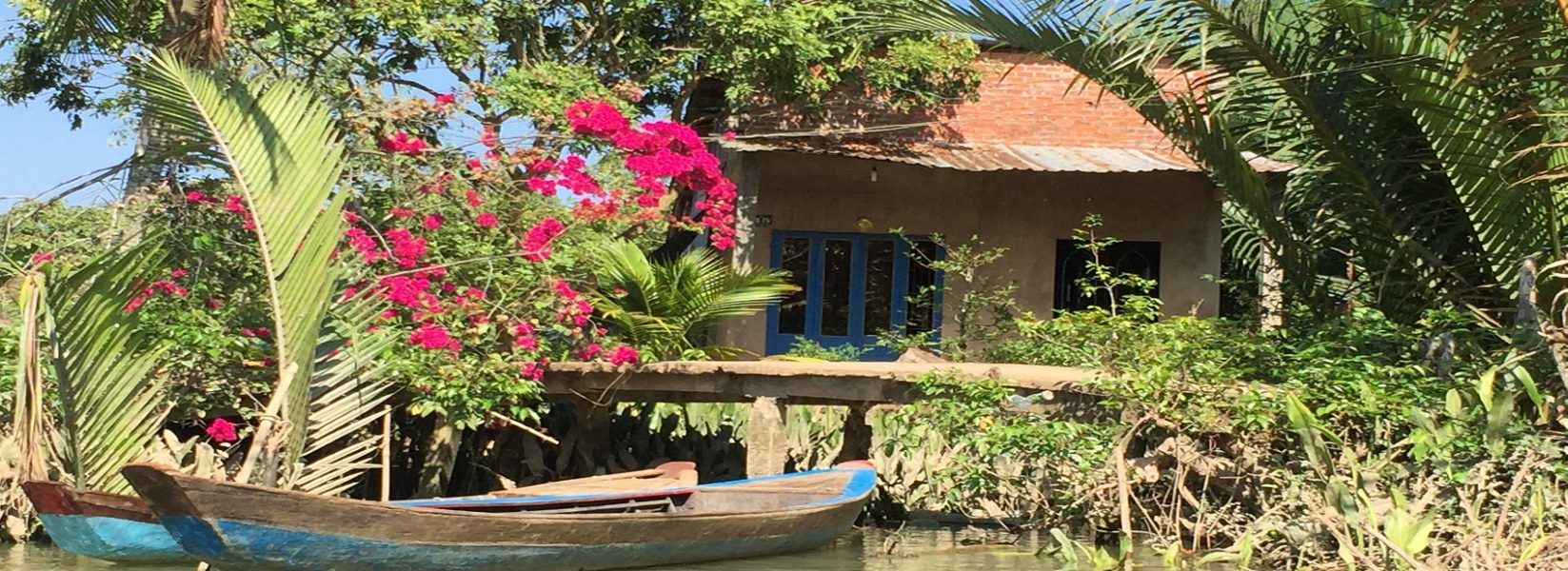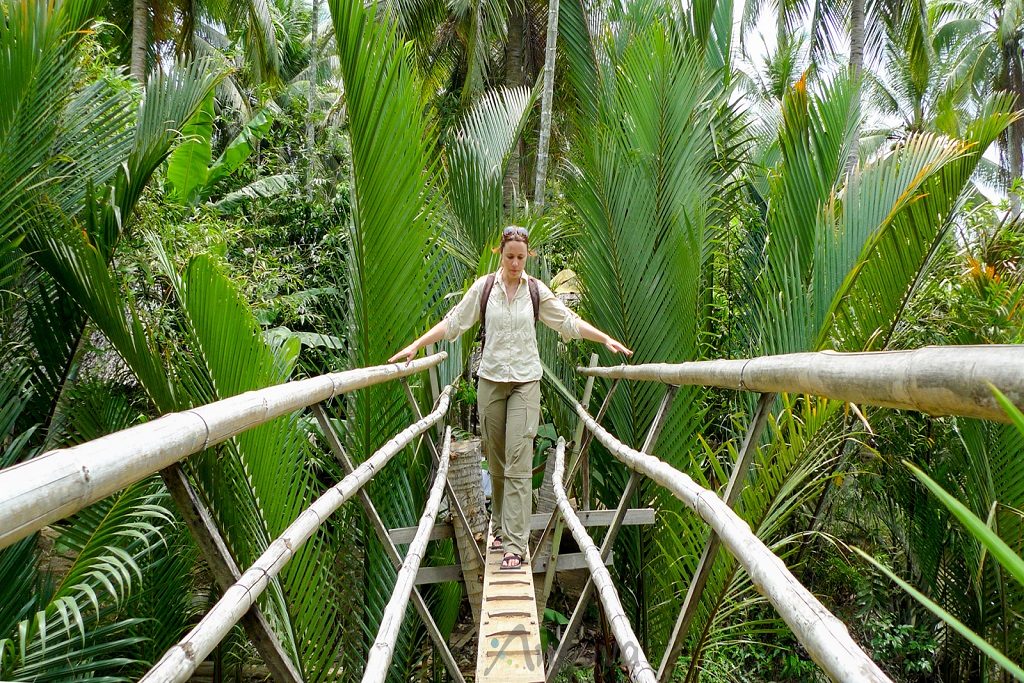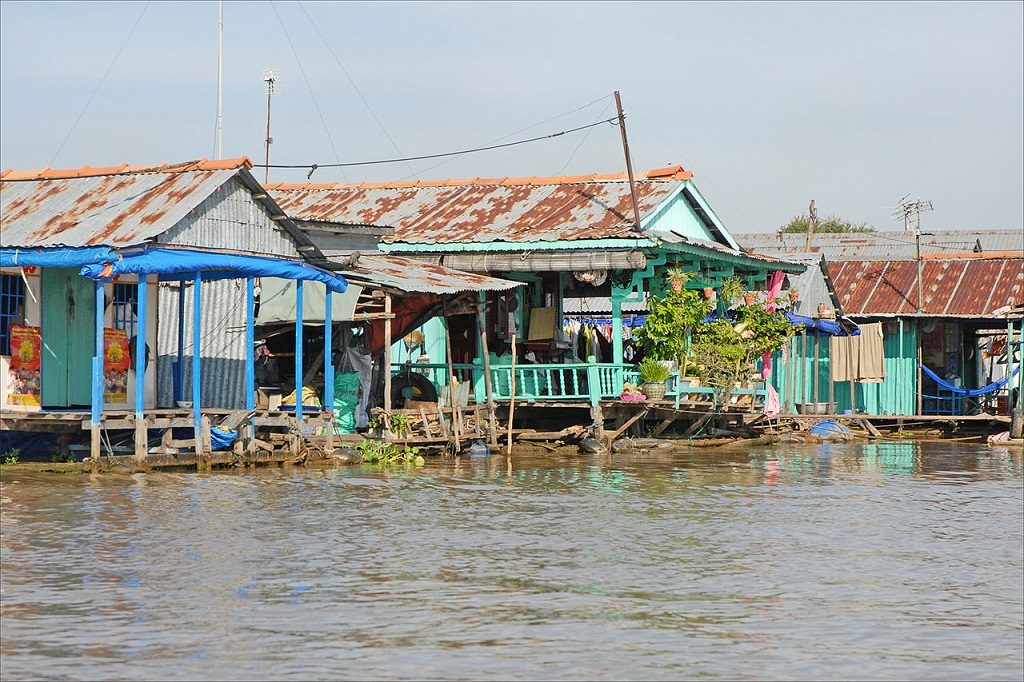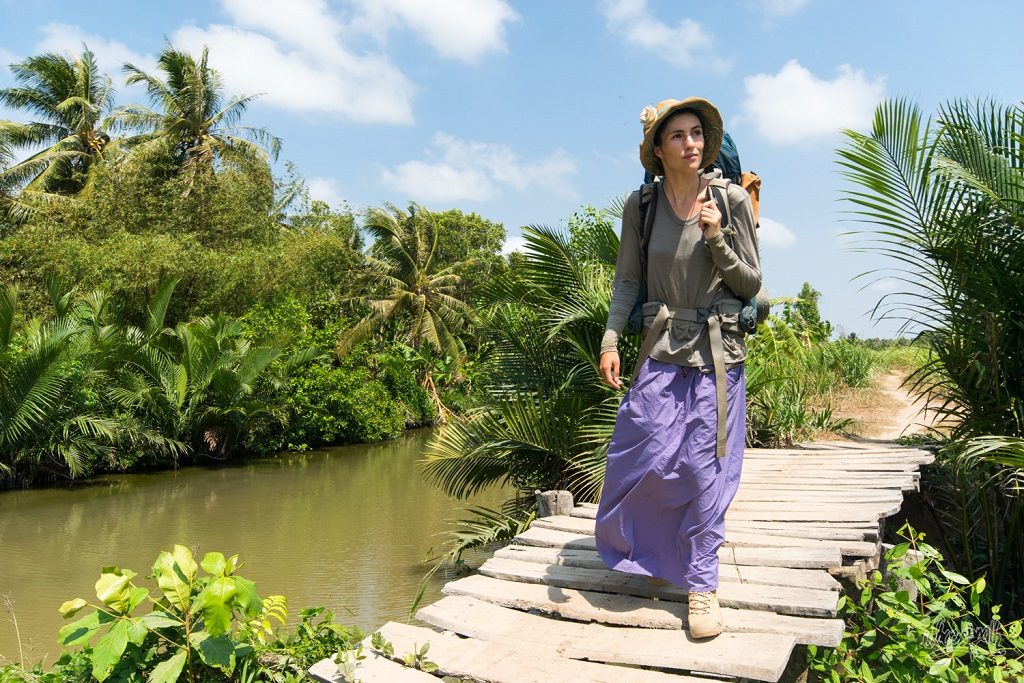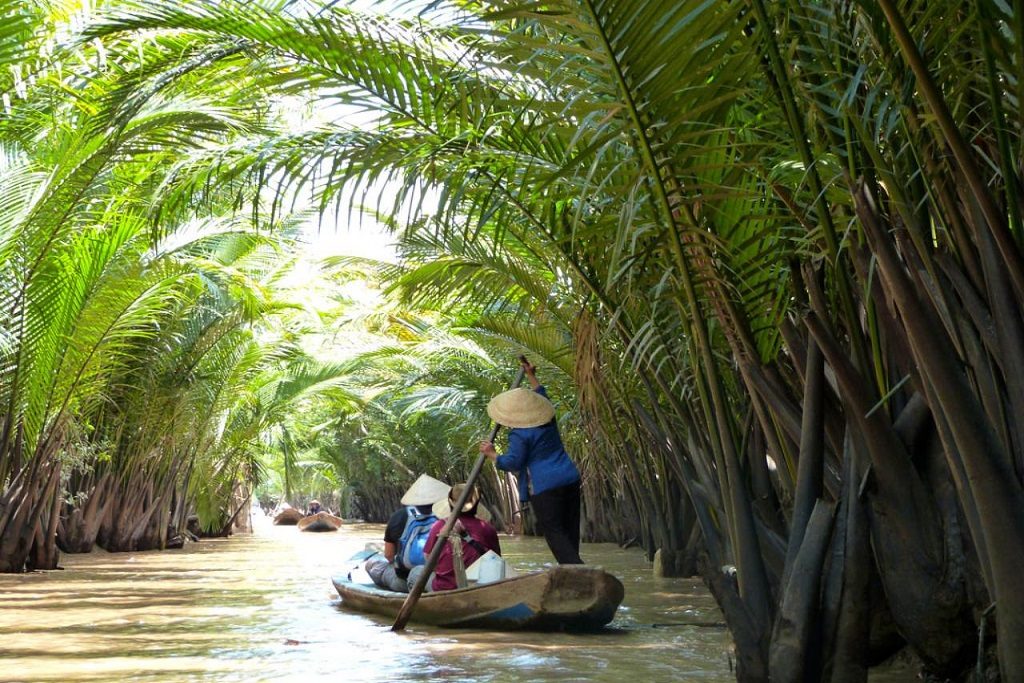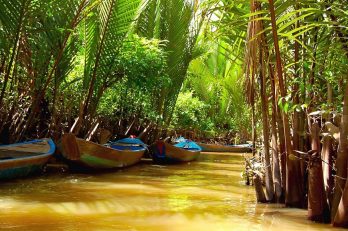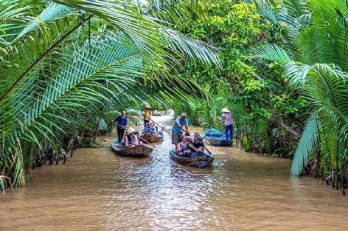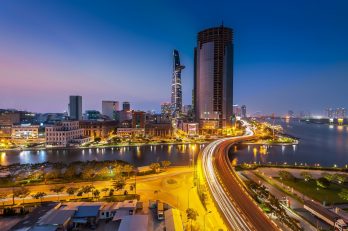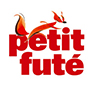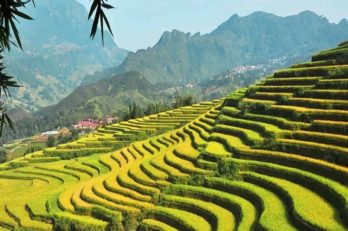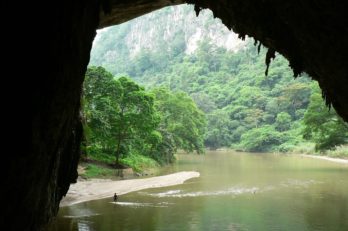The Mekong Delta – Delta of the 9 Dragons
Touring the orchards, paddy fields and swamplands of the Mekong Delta, you could be forgiven for thinking you’ve stepped into the pages of a geography textbook. A comma-shaped flatland stretching from Ho Chi Minh’s city limits southwest to the Gulf of Thailand, the delta is Vietnam’s rice bowl, an agricultural miracle that pumps out more than a third of the country’s annual food crop from just ten percent of its total land mass.
Rice may be the delta’s staple crop, but coconut palms, fruit orchards and sugar-cane groves also thrive in its nutrient-rich soil, and the sight of conical-hatted farmers tending their land is one of Vietnam’s most enduring images. To the Vietnamese, the region is known as Cuu Long, “Nine Dragons”, a reference to the nine tributaries of the Mekong River, which dovetail across plains fashioned by millennia of flood-borne alluvial sediment.
Surprisingly, agriculture gripped the delta only relatively recently. Under Cambodian sway until the close of the seventeenth century, the region was sparsely inhabited by the Khmer krom, or “downstream Khmer”, whose settlements were framed by swathes of marshland. The eighteenth century saw the Viet Nguyen lords steadily broaden their sphere of influence to encompass the delta, though by the 1860s France had taken over the reins of government. Sensing the huge profits to be gleaned from such fertile land, French colons spurred Vietnamese peasants to tame and till tracts of the boggy delta; the peasants, realizing their colonial governors would pay well for rice harvests, were quick to comply. Ironically, the same landscape that had served the French so well also provided valuable cover for the Viet Minh resistance fighters who sought to overthrow them; later it did the same for the Viet Cong, who had well-hidden cells here – inciting the Americans to strafe the area with bombs and defoliants.
A visit to the Mekong Delta is so memorable because of the region’s diversity. Everyday scenes include children riding on the backs of water buffalo or cycling to school through country lanes clad in white ao dai; rice workers stooping in a sea of emerald; market vendors grinning behind stacks of fruit; bright yellow incense sticks drying at the roadside; flocks of storks circling over a sanctuary at dusk; Khmer monks walking mindfully in the shadow of pastel pagodas; locals scampering over monkey bridges or rowing boats on the delta’s maze of channels.
There are over a dozen towns in the delta with facilities for tourists, though some are rarely visited as they are not on the way to anywhere. My Tho is well geared up for boat trips, and near enough to Ho Chi Minh City to be seen on a day-trip: it affords an appetizing glimpse of the delta’s northernmost tributary, the Tien Giang. From My Tho, laidback Ben Tre and the bounteous fruit orchards besieging it are only a hop and a skip away. Cao Lanh is strictly for bird enthusiasts, but Sa Dec , with its timeless river scenes and riotously colourful flower nurseries, has a more universal appeal, while just down the road, Vinh Long is another jumping-off point for boat trips.
Many visitors spend a day or two in Can Tho, the delta’s biggest settlement, to take advantage of its decent hotels and restaurants and to recharge batteries before venturing out to the floating markets nearby. From Can Tho, there’s something to be said for dropping down to the foot of the delta, where the swampland that surrounds Ca Mau can be explored by boat, and Mui Ca Mau signals journey’s end in Vietnam. Pulling up, en route, at the Khmer stronghold of Soc Trang is especially rewarding if your trip coincides with the colourful Oc Om Bok festival (Nov or Dec), during which the local Khmer community takes to the river to stage spectacular longboat races. Northwest of Can Tho meanwhile, and a stone’s throw from the Cambodian border, is the ebullient town of Chau Doc, south of which Sam Mountain provides a welcome undulation in the surrounding plains. The opening of the border here has brought a steady stream of travellers going on to Phnom Penh by boat, and several of them rest up a few days here before leaving the country.
What to see in the Mekong Delta?
01 – Chau Doc
Since the opening of the border to Cambodia a few kilometres north of town, Chau Doc has boomed in popularity, and is the only place apart from Can Tho where you are likely to see foreigners in any numbers. Snuggled against the west bank of the Hau Giang River, the town came under Cambodian rule until it was awarded to the Nguyen lords in the mid-eighteenth century for their help in putting down a localized rebellion.
The area sustains a large Khmer community, which combines with local Cham and Chinese to form a diverse social melting pot. Just as diverse is Chau Doc’s religious make-up: as well as Buddhists, Catholics and Muslims, the region supports an estimated 1.5 million devotees of the indigenous Hoa Hao religion. Forays by Pol Pot’s genocidal Khmer Rouge into this corner of the delta led to the Vietnamese invasion of Cambodia in 1978.
On Doc Phu Thu and a few other streets in town, colonial relics are still evident, but their grand shophouse terraces, flaunting arched upper-floor windows and awnings propped up by decorous wrought-iron struts, are interspersed with characterless new edifices.
02 – Ha Tien
Of all Delta towns, Ha Tien, at the extreme northwest on the border with Cambodia, has been changing the fastest in recent years: where once it received only a trickle of visitors, it now buzzes with Western travellers. Two major factors have caused this: first, the opening of the border to foreigners at Xa Xia, just north of Ha Tien, meaning that it’s now possible to head directly to Cambodia’s coastal towns of Kep and Sihanoukville without passing through Phnom Penh; and the second factor is the beginning of hydrofoil services to Phu Quoc, offering a shorter and cheaper route to the island than from Rach Gia.
Thus this town, which until recently had an end-of-the-line feel, is coming to terms with its newfound popularity.
03 – Vinh Long
Ringed by water and besieged by boats and tumbledown stilthouses, the island that forms the heart of Vinh Long has the feel of a medieval fortress. However, if you find yourself yearning for a peaceful backwater, first impressions will be a let-down; central Vinh Long is hectic and noisy, its streets a blur of buses and motorbikes. Make for the waterfront, though, and it’s a different story, with hotels, restaurants and cafés conjuring up something of a riviera atmosphere.
From here you can watch the Co Chien River roll by, dotted with sampans, houseboats and the odd raft of river-weed. Though there’s little to see or do in town, Vinh Long offers some of the most interesting boat trips in the delta – to the Cai Be floating market, coconut candy workshops, fruit orchards or even overnighting in home-stays.
04 – Bac Lieu
Beyond Soc Trang the landscape becomes progressively more waterlogged and water palms hug the banks of the waterways that crisscross it. A little over 40km southwest of Soc Trang, Highway 1 dips south towards the crown of Bac Lieu, before veering off west to Ca Mau. It may be the back end of nowhere, but Bac Lieu’s prosperity is evident in new shopping complexes and upmarket homes around the centre.
The source of this prosperity is overseas Vietnamese, many of whom hail from this region. Although there are few sights to set the pulse racing, the town’s got the only accommodation between Soc Trang and Ca Mau and is in good proximity to the nearby Bac Lieu Bird Sanctuary.
05 – Soc Trang
Straddled across an oily branch of the Mekong, Soc Trang lacks the panache of other delta towns, though on the fifteenth day of the tenth lunar month (Nov–Dec) the town springs to life as thousands converge to see traditional Khmer boats (thuyen dua) racing each other during the Oc Om Boc festival.
Discover our 02-days trip at the Mekong Delta.
Have a nice trip!



